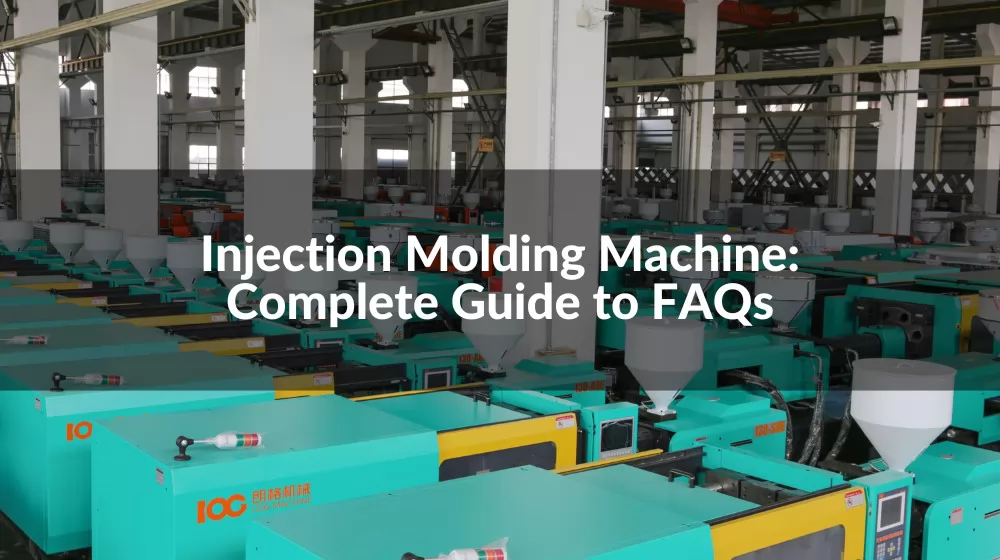
Injection molding machine is an important production machine for many daily necessities. The quality of injection molding machine affects the subsequent production and operation.
Purchasing an injection molding machine is a considerable investment. It is a waste of money to buy a machine that is too big, and it is not appropriate to buy a machine that is too small. Therefore, choosing the right machine for the product is the most important thing for the buyer. The supplier recommending suitable machines and suggesting how to choose a machine is the first lesson the supplier provides to the buyer.
This guide answers common injection molding machine questions for you, including basic knowledge, types, specification calculations and selection guidelines, hoping to help you.
Recommended reading:
Guide Catalog
1.What is an injection molding machine?
2.What is the working principle of injection molding machine?
4.What are the applications of injection molding?
5.Is China's injection molding machine worth investing in?
7.What are the types of injection molding machines?
8.What is a hydraulic injection molding machine?
9.What is an all-electric plastic molding machine?
10.What is a servo motor injection molding machine?
11.What is a fixed pump injection molding machine?
12.What is a PET injection molding machine?
13.What is a high-speed injection molding machine?
14.What is a variable pump injection molding machine?
15.What is a two-platen injection molding machine?
16.What is a three-platen injection molding machine?
17.Can one injection molding machine produce three products?
18.What does tonnage mean in injection molding?
19.How to calculate the tonnage of injection molding machine?
20.How long does injection molding take?
21.Can the injection molding machine work 24 hours a day?
22.How to reduce the weight of parts in injection molding?
23.What is the aspect ratio of an injection molding machine?
24.How to determine the injection weight?
25.How to calculate the clamping force of the injection molding machine?
26.How much does an injection molding machine cost?
27.How much does injection molding cost?
28.How to maintain the injection molding machine?
29.How to clean the screw of injection molding machine?
30.How often should an injection molding machine be replaced?
31.How to choose an injection molding machine?
32.Where can I find China plastic injection molding machines?
33.How can I expand my injection molding business?
34.What is the most important thing in plastic injection molding?
35.Which top injection molding machine manufacturers are there in China?
36.Who are the top injection molding machine manufacturers in the world?
1.What is an injection molding machine?
An injection molding machine is a machine that is used for manufacturing plastic products by the injection molding process. It comprises of two main parts: an injection unit and a clamping unit. The injection unit melts the plastic material and injects it into the mold, while the clamping unit holds the mold and applies pressure to ensure the plastic solidifies in the desired shape. Injection molding machines come in various sizes and can be used to create a wide range of products, from small plastic parts to large automotive components.
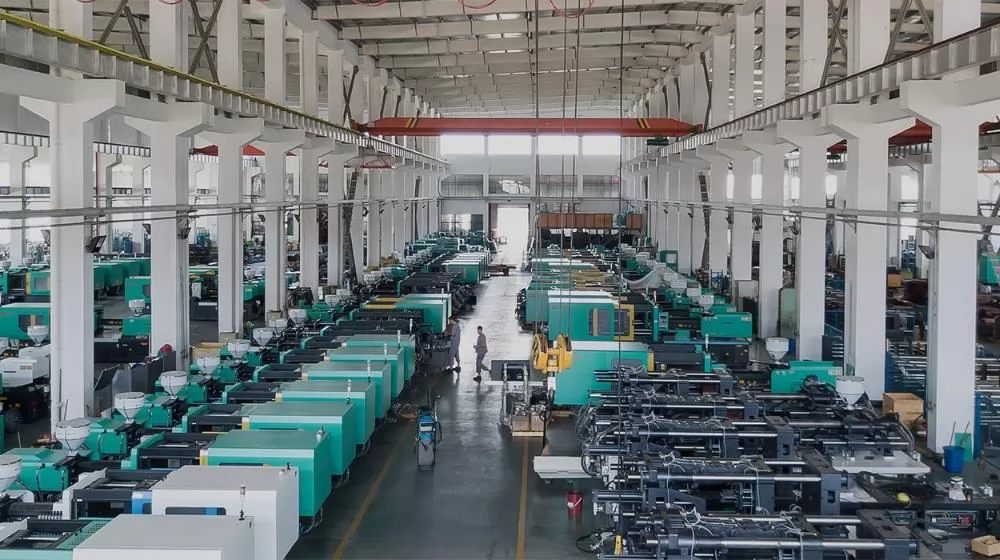
2.What is the working principle of injection molding machine?
The working principle of an injection molding machine is based on the "injection molding process". The process begins by melting plastic pellets in the hopper, which is then fed into the barrel of the injection molding machine by a screw. The screw then pushes the molten plastic into the mold cavity where it cools and solidifies into the desired shape.
The machine consists of the following main components:
-
Hopper - stores and feeds plastic pellets into the machine.
-
Barrel - where the plastic pellets are melted by heaters.
-
Screw - used to inject the molten plastic into the mold.
-
Injection nozzle - the point where the molten plastic is injected into the mold.
-
Mold - the shape into which the molten plastic is injected and cooled.
-
Clamping unit - which holds the mold shut during the injection process.
The process begins with the loading of plastic pellets into the hopper, and then the screw is used to melt the plastic and inject it into the mold. Once the plastic has been injected, the mold is cooled to solidify the plastic into the desired shape. Finally, the mold is opened and the finished product is removed.
The whole process is controlled by an injection molding machine controller, which controls the speed of the screw, the temperature, and pressure, and the timing of the mold opening and closing.
3.What is Injection Molding?
Injection molding is a manufacturing process used to produce parts by injecting molten material into a mold. It is typically used to create plastic parts, but can also be used to create parts from other materials, such as metal or glass.
The process begins by melting plastic pellets in an injection molding machine and injecting the molten plastic into a mold. The mold is a hollowed-out block that is designed to give the plastic parts the desired shape. Once the plastic has cooled and solidified, the mold is opened, and the finished parts are removed. The parts are then usually inspected for quality and any defects are removed.
The injection molding process is highly versatile and can be used to create a wide range of parts, from small, intricate parts like gears and electrical connectors, to larger parts like car body panels and household appliances.
It is also highly efficient and can produce large numbers of parts quickly and at a low cost.
4.What are the applications of injection molding?
Injection molding is a versatile manufacturing process that can be used to create a wide range of parts and products. Some common applications of injection molding include:
Automotive
Injection molding is used to create a wide range of parts for the automotive industry, such as car body panels, dashboards, door handles, and mirrors.
Medical
Injection molding is used to create a wide range of medical devices, such as syringes, surgical instruments, and prosthetics.
Packaging
Injection molding is used to create a wide range of packaging products, such as plastic bottles, containers, and caps.
Consumer goods
Injection molding is used to create a wide range of consumer goods, such as toys, small appliances, and household items.
Industrial and electronics
Injection molding is used to create a wide range of industrial and electronic components, such as gears, connectors, and housings.
Food service
Injection molding is used to create food service items such as plates, cups, and utensils.
Construction
Injection molding is used to create construction materials such as pipes, window frames and door frames.
Aerospace
Injection molding is used to create a wide range of aerospace components, such as fuel tanks, ducts, and housings.
The above are just a few examples of the many applications of injection molding. The process is highly versatile and can be used to create a wide range of parts and products for a variety of industries.
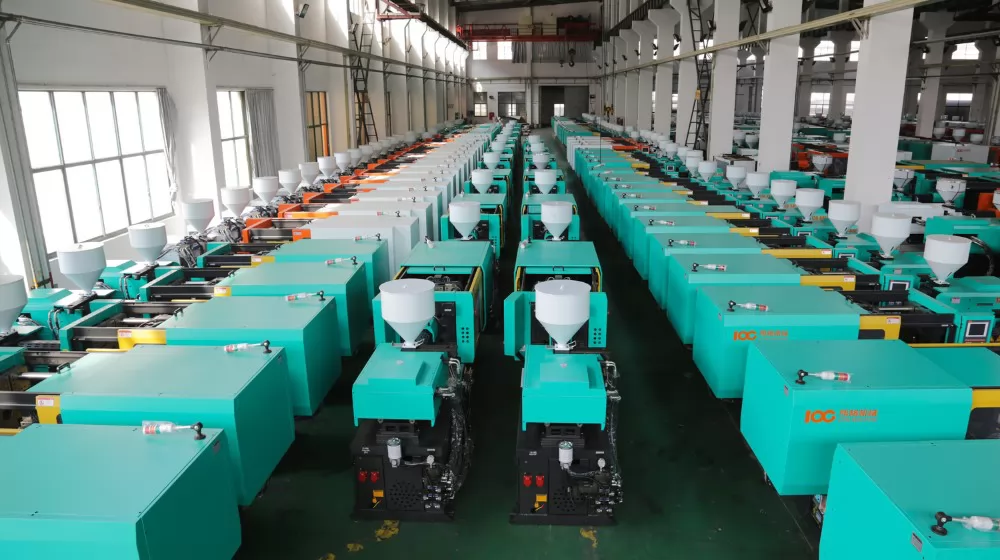
5.Is China's injection molding machine worth investing in?
Investing in the Chinese injection molding machine industry can be a good opportunity, but like any investment, it comes with its own set of risks and rewards. Here are some factors to consider when evaluating the Chinese injection molding machine industry:
Market size
China is the largest producer and consumer of injection molding machines in the world, with a market share of around 45%. The Chinese market is also growing rapidly, driven by the country's growing manufacturing sector.
Cost advantages
Chinese manufacturers are known for their ability to produce high-quality injection molding machines at a lower cost than their foreign counterparts, which can be a major advantage for buyers.
Export opportunities
Chinese injection molding machines are exported to many countries worldwide, providing opportunities for foreign buyers to access the Chinese market.
Technological advancements
Chinese manufacturers are investing in research and development to improve the quality and capabilities of their machines.
Government support
The Chinese government has been promoting the development of the domestic injection molding machine industry through various policies and initiatives.
Competition
Chinese industry is highly competitive, there are a large number of local manufacturers, some of which are state-owned enterprises, and some are private companies. The quality and price vary greatly from one supplier to another, so be sure to do your research and select a reputable supplier.
However, investing in China's injection molding machine industry also comes with its own set of risks.
Plastic injection molding can be a good business opportunity, but like any business, it has its own set of risks and rewards. Some factors to consider when evaluating whether a plastic molding business is a good opportunity to buy include:
Market demand
The demand for the products the business produces is an important factor to consider. You should research the market to see if there is a need for the products the business produces and if that demand is likely to grow in the future.
Competitive landscape
It's important to understand the competitive landscape of the industry. Who are the major players, what are the barriers to entry and what are the profit margins?
Equipment
The condition and age of the equipment used by the business is an important factor to consider. The cost of maintenance and replacement of equipment should be taken into account.
Staffing
The quality and experience of the staff, including the management team, is important. It can be difficult to find and retain qualified personnel, especially in a specialized field like plastic injection molding.
Location
The location of the business is also important to consider, as it can affect the cost of raw materials, transportation, and labor.
Financials
It's important to review the financials of the business, including income statements, balance sheets and cash flow statements to get a sense of the business's profitability, efficiency and liquidity.
6.What kind of knowledge should be possessed in injection molding machine and injection molding process?
In order to work effectively with injection molding machines and the injection molding process, one should possess a good understanding of the following areas:
Plastic materials
A good understanding of different types of plastic materials, their properties, and how they behave under different conditions is important. This includes knowledge of the different grades of plastic, their melting points, and how they react to different temperatures and pressures.
Injection molding machine mechanics
Knowledge of how injection molding machines work, including the different components and how they interact with one another, is essential. This includes an understanding of the injection unit, the clamping unit, and the control systems.
Mold design
Knowledge of how to design molds that are suitable for injection molding, including the different types of molds and the principles of mold design.
Process control
Knowledge of how to control the injection molding process, including how to set the correct temperature, pressure, and speed settings, and how to troubleshoot and optimize the process.
Quality control
Knowledge of how to inspect and test the quality of the finished parts, including knowledge of the different quality control methods and how to interpret the results.
Safety
Knowledge of the safety procedures and regulations related to injection molding, including knowledge of the potential hazards and how to prevent accidents.
Industry Standards
Knowledge of industry standards, such as ISO, ASTM, UL and RoHS and how to apply them in the production process.
Computer Aided Design and Manufacturing (CAD/CAM)
Knowledge of how to use computer-aided design and manufacturing software to design, program and simulate the injection molding process.
In addition to these specific areas of knowledge, it's also important for those working with injection molding machines and the injection molding process to have strong problem-solving and analytical skills, as well as the ability to work well under pressure and in a team environment.
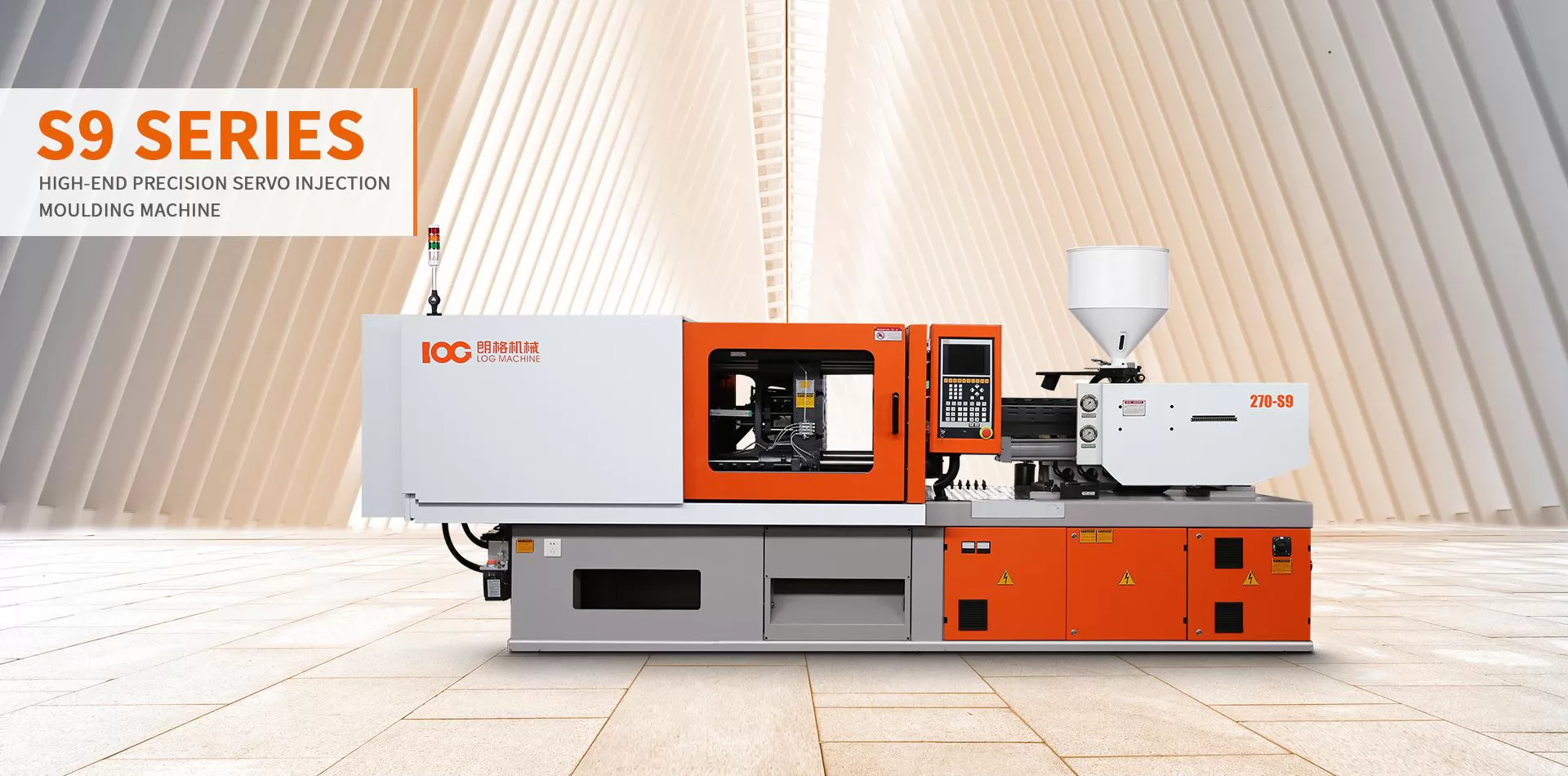
7.What are the types of injection molding machines?
There are several types of injection molding machines, each with its own set of features and capabilities. Some of the main types of injection molding machines include:
Hydraulic injection molding machines
These are the most traditional type of injection molding machine, and they use a hydraulic system to generate the clamping force needed to hold the mold shut during the injection process. They are generally slower and less precise than other types of machines, but they are also less expensive.
Electric injection molding machines
Electric machines use an electric motor to drive the injection unit and the clamping unit. They are more precise and faster than hydraulic machines, and they are also more energy-efficient.
Servo injection molding machines
Hybrid machines combine the best features of hydraulic and electric machines. They use an electric motor to drive the injection unit and a hydraulic system to generate the clamping force. They are faster and more precise than hydraulic machines and more energy-efficient than electric machines.
Two-shot or multi-shot injection molding machines
These machines are able to inject two or more different materials into the same mold, allowing for the creation of multi-material parts.
Micro-injection molding machines
These machines are specially designed for the production of small and precise parts, typically less than 5 grams.
Vertical injection molding machines
These machines have the mold clamping and injection unit on a vertical axis, allowing for a vertical injection of the molten plastic into the mold. They are best suited for insert molding and are commonly used for applications that require the production of small parts with precision.
Rotary injection molding machines
Rotary machines have a horizontal mold clamping and rotating injection unit. They are best suited for producing large parts, such as automotive parts, and are commonly used in the production of large plastic products.
The type of machine you choose will depend on the specific requirements of your application, such as the size, complexity, and material of the parts you want to produce.
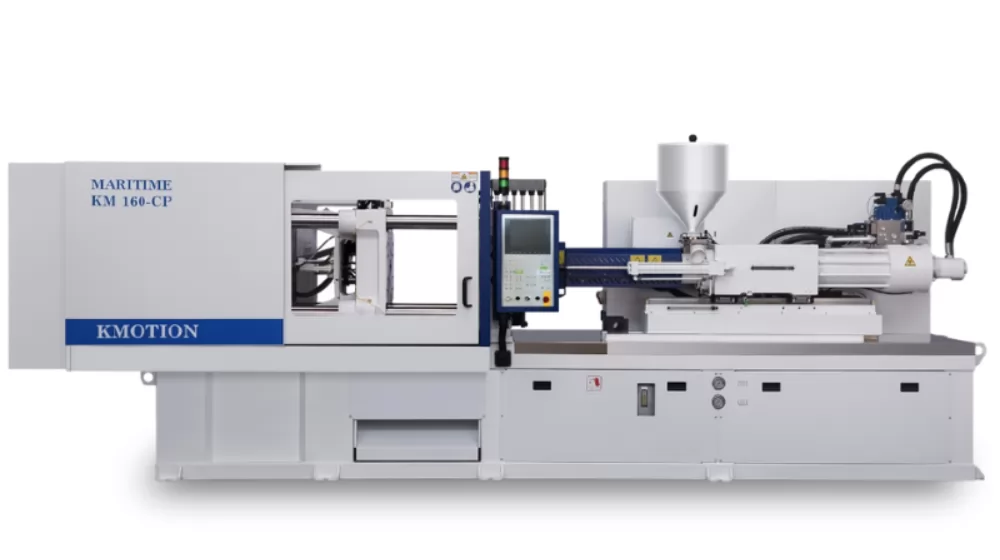
8.What is a hydraulic injection molding machine?
Hydraulic injection molding machine is a type of injection molding machine that uses a hydraulic system to generate the clamping force needed to hold the mold shut during the injection process. The hydraulic system uses a combination of oil and high-pressure pumps to create the force required to close the mold.
Hydraulic injection molding machines are known for their durability and reliability, and they are capable of producing high-quality parts. They are also relatively simple to operate and maintain, which makes them a popular choice for many manufacturers.
However, hydraulic machines are generally slower and less precise than electric or hybrid machines. They are also less energy-efficient and tend to be more expensive to run. They are also less precise and repeatable in comparison to electric machines.
Hydraulic injection molding machines are a good choice for manufacturers who are looking for a reliable, durable, and cost-effective option for producing high-quality plastic parts.
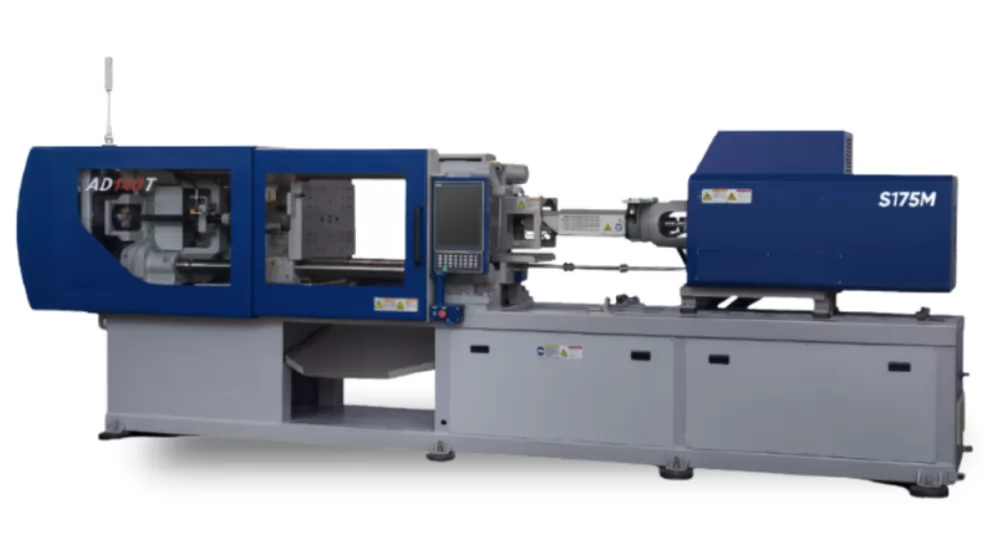
9.What is an all-electric plastic molding machine?
An all-electric plastic injection molding machine is a type of injection molding machine that uses electric motors to drive all of its mechanical movements, rather than using a hydraulic system.
All-electric injection molding machines are known for their high precision, repeatability and accuracy, as well as their energy efficiency, as they don't require oil or other hydraulic fluids to operate. They are also faster and quieter than hydraulic machines. They are ideal for producing small and precise parts, they have a high degree of control over the process parameters, which results in a high-quality part.
All-electric machines are also easy to maintain, they have fewer moving parts and less complex systems, making them less prone to breakdowns and malfunctions.
On the other hand, all-electric machines tend to be more expensive than hydraulic machines, and they may require more technical expertise to operate and maintain. They also may not be suitable for certain applications that require high clamping force and large parts.
All-electric injection molding machines are a good choice for manufacturers who are looking for a precise, energy-efficient, and low-maintenance option for producing high-quality plastic parts.
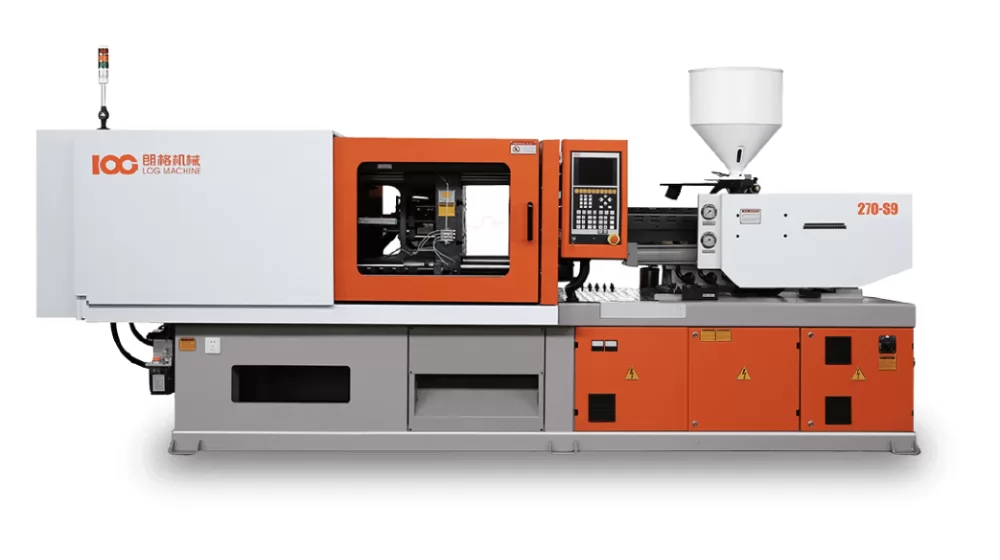
10.What is a servo motor injection molding machine?
A servo motor injection molding machine is a type of injection molding machine that uses servo motors to drive the mechanical movements of the machine, rather than using a hydraulic system or traditional electric motors.
Servo motors are highly precise and accurate, and they can provide a high level of control over the injection molding process. This results in a high-quality part with minimal defects and less material waste. They also can provide energy savings by only using the energy required for the specific process and not wasting energy like traditional electric motors.
Servo motor injection molding machines are also more adaptable to changes in the production process, they can easily adjust to changes in product design and production volume, providing more flexibility.
However, servo motor injection molding machines tend to be more expensive than traditional hydraulic or electric machines. They also may require more technical expertise to operate and maintain.
11.What is a fixed pump injection molding machine?
A fixed pump injection molding machine is a type of injection molding machine that uses a fixed displacement pump to provide the hydraulic power for the injection and clamping mechanisms. The pump is pre-set to a specific, fixed amount of flow and pressure and it is not adjustable during the machine operation.
Fixed pump injection molding machines are known for their simplicity, durability, and low maintenance costs. They are also relatively low in cost, making them a popular choice for manufacturers who are looking for a cost-effective solution.
However, fixed pump machines have some limitations, such as lower energy efficiency and less precise and repeatable production, compared to other types of machines like servo motor or variable pump machines. They also have a lower injection pressure and speed, which makes them less suitable for production of large or complex parts.
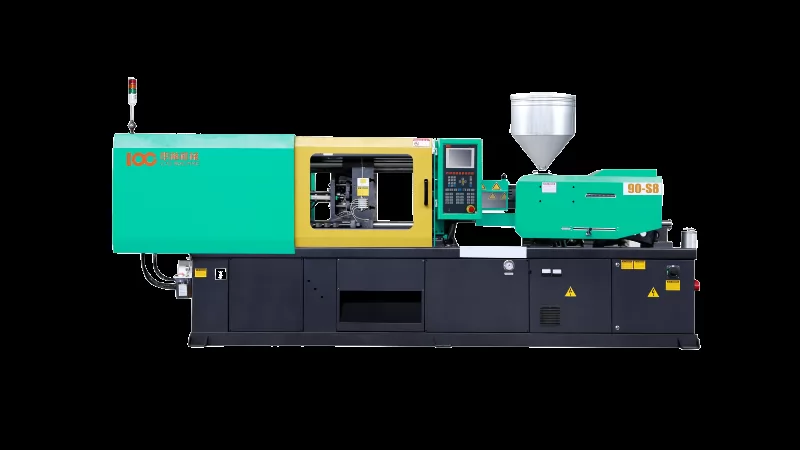
12.What is a PET injection molding machine?
PET (polyethylene terephthalate) injection molding machine is a type of injection molding machine that is specifically designed to process PET plastic. PET is a thermoplastic material that is commonly used to make bottles, containers, and other products that require transparency, high strength, and resistance to heat and chemicals.
PET injection molding machines are designed to handle the high viscosity and high melting point of PET plastic. They typically use a specialized screw design, called a preform screw, which is specifically designed to process PET plastic and ensure that the material is properly melted and homogenized before it is injected into the mold.
PET injection molding machines also typically include special features to handle the unique properties of PET plastic, such as faster cooling rates and higher clamping forces. They also may have specialized temperature controls and cooling systems to maintain the proper temperature and cooling rate for the PET plastic.
13.What is a high-speed injection molding machine?
A high-speed injection molding machine is a type of injection molding machine that is designed to operate at a faster cycle time compared to traditional injection molding machines. This allows for the production of more parts in a shorter amount of time.
High-speed injection molding machines are designed to handle the high injection speeds and fast cycle times required for high-volume production. They often use advanced features such as servo motors, high-speed injection units, and fast-acting clamping mechanisms to achieve faster cycle times. Some high-speed injection molding machines can achieve cycle times as fast as 0.5 seconds or less.
High-speed injection molding machines are typically more expensive than traditional injection molding machines, and they may require more technical expertise to operate and maintain. They are also more demanding on the molds and tooling, as they require a high level of precision and accuracy.
14.What is a variable pump injection molding machine?
Variable pump injection molding machine is a type of injection molding machine that uses a variable displacement pump to provide the hydraulic power for the injection and clamping mechanisms. The pump's flow and pressure can be adjusted during the machine operation, allowing for more precise and efficient control of the injection process.
Variable pump injection molding machines are known for their energy efficiency and precise control over the injection process. They can adjust the amount of oil flow and pressure according to the actual needs of the process, which results in energy savings and a reduction of the machine's noise level. They also have a higher injection pressure and speed, which makes them suitable for the production of large or complex parts.
Variable pump injection molding machines are more versatile and adaptable to changes in the production process, they can easily adjust to changes in product design and production volume, providing more flexibility. They also tend to be more expensive than fixed pump machines.
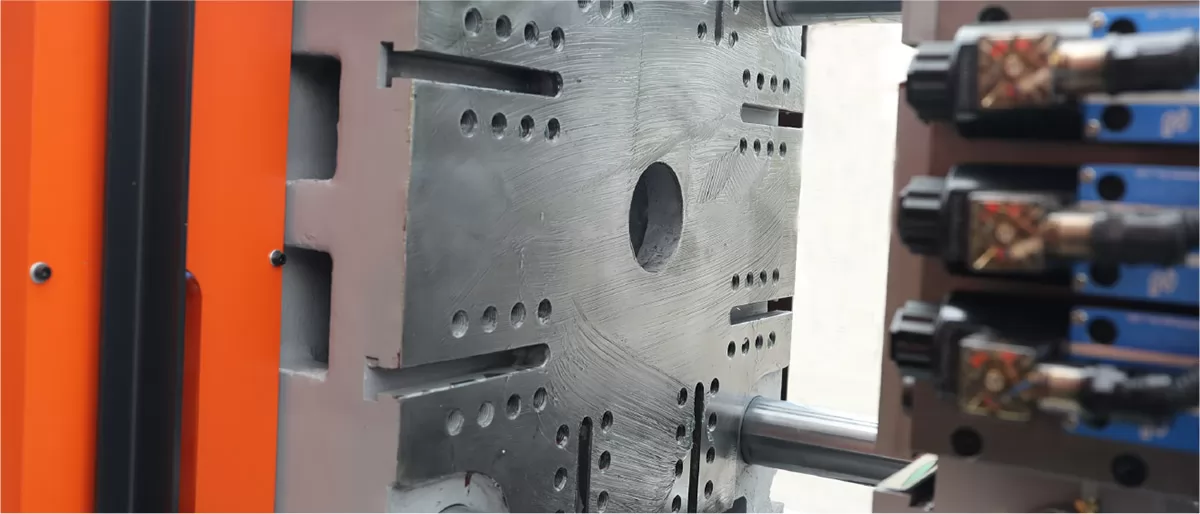
15.What is a two-platen injection molding machine?
A two-platen injection molding machine is a type of injection molding machine that uses two platens (horizontal plates) to support the mold during the injection process. The two platens, one fixed and one movable, work together to clamp the mold and hold it in place during the injection process.
Two-platen injection molding machines are known for their durability and reliability, and they are capable of producing high-quality parts. They also tend to be more compact and less expensive than three-platen machines. They are also more versatile and adaptable to changes in the production process, they can easily adjust to changes in product design and production volume, providing more flexibility.
Two-platen injection molding machines are typically used for a wide range of applications, including the production of small and medium-sized parts, such as household appliances, automotive parts, and packaging materials.
16.What is a three-platen injection molding machine?
A three-platen injection molding machine is a type of injection molding machine that uses three platens (horizontal plates) to support the mold during the injection process, rather than the traditional two platens.
Three-platen injection molding machines have a larger platen size and increased clamping force, which allows them to handle larger and heavier molds. They also have a longer mold opening stroke, which allows for easy removal of the molded parts, as well as easy cleaning and maintenance of the machine.
Three-platen injection molding machines are typically used for large-scale production of large and heavy parts, such as automotive parts and household appliances. They are also suitable for producing large parts with deep cavities or undercuts.
However, three-platen injection molding machines tend to be more expensive than traditional two-platen machines, and they may require more technical expertise to operate and maintain. They also tend to be larger and take up more space in the factory.
17.Can one injection molding machine produce three products?
It is possible for one injection molding machine to produce multiple products, but it depends on the design of the molds and the complexity of the parts being produced.
Multi-cavity molds
One way to produce multiple products on one machine is to use multi-cavity molds. These molds have multiple impressions or cavities that can produce multiple parts at the same time.
Stack molds
Another way is to use stack molds, where multiple molds are stacked on top of each other and are all connected to the same injection molding machine. Each mold produces a different part, and the machine cycles through the molds to produce all the different parts.
Indexing molds
With indexing molds, the machine rotates the mold to produce different parts. This is done by having a rotating table that holds multiple cavities that can produce different parts.
Multi-component molds
Some parts require more than one type of plastic to be molded together, this is called multi-component molding. In this case, one machine is used to inject different types of plastics into the same mold, resulting in a finished part.
It's worth noting that the production rate will be affected depending on the design of the mold, the complexity of the parts, and the number of cavities or impressions. It's important to consult with experienced injection molding professionals to ensure that the production rate is sufficient and that the machine selected meets the specific requirements of the application.
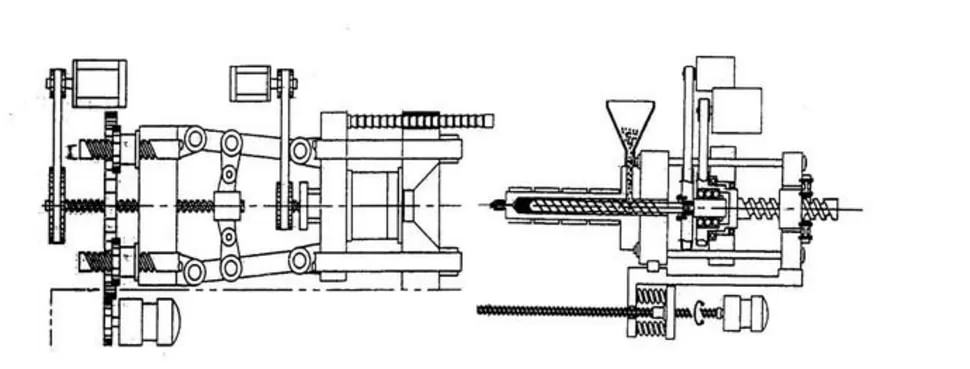
18.What does tonnage mean in injection molding?
In the context of injection molding, tonnage refers to the clamping force that the machine can exert on the mold to hold it shut during the injection process. It is usually measured in U.S. tons (short ton) or metric tons (tonne).
The clamping force is generated by the machine's clamping unit and is necessary to keep the mold shut while the molten plastic is injected into it. The tonnage required for a specific application will depend on the size and complexity of the part, as well as the type of plastic being used.
For example, a small, simple part made of a relatively soft plastic may require only a few tons of clamping force, while a larger, more complex part made of a harder plastic may require several tens of tons of clamping force.
When selecting an injection molding machine, it is important to choose one that has a clamping force that is appropriate for the specific application. Choosing a machine with too low of a tonnage may result in the mold not being held shut properly, leading to defects in the finished parts. On the other hand, choosing a machine with too high of a tonnage can result in excessive wear and tear on the machine and the mold, as well as increased energy consumption.
19.How to calculate the tonnage of injection molding machine?
Calculating the tonnage of an injection molding machine requires taking into account several factors, including the size and complexity of the part being produced, the type of plastic being used, and the desired cycle time of the machine.
One way to estimate the tonnage required for a specific application is to use the "rule of thumb" of 2 to 3 tons per square inch of the projected area of the part. This means that for a part with a projected area of 100 square inches, a machine with a tonnage of 200 to 300 tons would be appropriate. However, this is just a general guideline and the actual tonnage required can vary depending on the specific application.
Another way to estimate the tonnage of an injection molding machine is to use a clamp force calculator. These calculators take into account a variety of factors such as the projected area of the part, the type of plastic being used, the size and complexity of the part, and the desired cycle time. These calculators are available online and can give a more accurate estimate of the tonnage required for a specific application.
However, it is important to note that the tonnage calculation alone is not enough to determine the suitability of a machine for a specific application. Other factors such as the machine's injection rate, injection pressure, and cooling rate are also important.
Click to read how it is calculated
20.How long does injection molding take?
The length of time it takes for an injection molding process to complete can vary depending on a number of factors, including the size and complexity of the part, the type of plastic being used, and the machine's cycle time.
A simple and small part made with a thermoplastic material can take as little as a few seconds to be injected, cooled and ejected from the mold. While a larger and more complex part made with a thermosetting material can take several minutes to complete the process.
The cycle time of an injection molding machine is the total time it takes to complete one injection molding cycle, which includes the time for filling the mold, cooling the part, opening the mold, and ejecting the finished part. The cycle time can vary from a few seconds for simple parts to several minutes for larger and more complex parts.
However, it's also worth noting that the injection molding process is not limited to only the time that the machine is actively working on making the parts. It also includes the time for preparing the machine, loading the mold, and removing the finished parts from the machine. Additionally, the time for inspection, packaging, and shipping of the finished parts also have to be taken into account.
In summary, the time it takes for an injection molding process to complete can vary widely depending on the specific application, but it is typically measured in terms of the machine's cycle time, which can range from a few seconds to several minutes.
21.Can the injection molding machine work 24 hours a day?
Injection molding machines can work 24 hours a day, but it depends on the specific machine and its maintenance schedule. Some machines are designed to run continuously for long periods of time, while others may require more frequent maintenance and downtime.
It's important to note that even if the machine is able to run for 24 hours, it doesn't necessarily mean that it should. Operating an injection molding machine for extended periods of time can lead to wear and tear on the machine, as well as the mold. This can result in increased maintenance costs, reduced efficiency, and decreased quality of the finished parts.
To avoid these issues, it's important to have a regular maintenance schedule in place to keep the machine in good working order. This can include regular cleaning and oiling, as well as more extensive maintenance such as replacing worn parts and calibrating the machine.
Additionally, it's also important to consider the availability of the raw materials, the personnel, and the demand of the product. Without enough raw materials, the machine can't produce parts and without personnel, the machine can't be operated. Also, without the demand of the product, it would be pointless to run the machine 24/7.
While injection molding machines can work 24 hours a day, it's important to have a regular maintenance schedule in place and to consider the availability of the raw materials, the personnel and the demand of the product. It's also important to consider the wear and tear on the machine and the mold, and to balance the need for continuous production with the need for maintenance and downtime.
22.How to reduce the weight of parts in injection molding?
There are several ways to reduce the weight of parts in injection molding:
Reduce the thickness of the walls
Thin-walled parts are typically lighter than thick-walled parts. By reducing the thickness of the walls, it's possible to reduce the weight of the part without compromising its structural integrity.
Use a lightweight plastic material
Substituting a lightweight plastic material for a heavier one can also help to reduce the weight of the part. Some plastics have a lower density than others and are therefore lighter.
Optimize the design
Changing the design of the part to eliminate unnecessary features or to use less material can also help to reduce its weight. For example, using ribs or hollow sections in the design can provide additional strength while reducing weight.
Use of foaming agents
Some materials can be blended with foaming agents to create a cellular structure in the part, which can reduce weight while maintaining strength.
Gas-assisted injection molding
This process involves injecting a small amount of gas into the mold during the injection process. This helps to displace the plastic and create hollow sections within the part, which can help to reduce its weight.
Multi-component molding
This process involves using two or more materials with different properties in the same part. This can reduce weight by using a lightweight material in sections of the part where strength is not a critical factor.
It's important to note that the weight reduction should not compromise the part's function and strength. It's also important to consider the cost, the material properties and the process requirements for any weight reduction methods.
_1673768084_WNo_800d600.webp)
23.What is the L/D ratio of an injection molding machine?
The L/D ratio (L/D stands for "length to diameter") of an injection molding machine refers to the ratio of the length of the screw to its diameter. The screw is the part of the machine that melts the plastic and injects it into the mold.
The L/D ratio is used to determine the compression ratio of the screw, which is the ratio of the volume of the plastic in the feed section of the screw to the volume in the metering section of the screw. A higher L/D ratio results in a higher compression ratio, which can improve the mixing and homogenization of the plastic and can help to reduce the residence time of the plastic in the machine, resulting in a faster cycle time.
The standard L/D ratio for an injection molding machine is typically around 20:1 or 24:1. However, depending on the specific application and the type of plastic being used, a different L/D ratio may be more appropriate. For example, a higher L/D ratio may be more suitable for processing highly filled or abrasive plastics, while a lower L/D ratio may be more appropriate for processing more delicate or heat-sensitive plastics.
24.How to determine the injection weight?
Injection weight is an important parameter of an injection molding machine, and it is the most useful and critical parameter for selecting an injection molding machine. Expressed in gram or ounze, although this parameter is simple and easy to understand, it can also be easily misunderstood. the reason is simple. When the plastic material is determined, the weight of the plastic part can be determined. Therefore, it is easy for them to use the injection weight to select an injection molding machine. In fact, the definition of injection weight refers to the maximum plastic injection weight that the injection device can reach when the screw performs the maximum injection stroke under the screw. Air shot state (not injected into the mold); this parameter reflects the processing capacity of the injection molding machine to a certain extent; it can be measured or calculated theoretically (theoretical value and measured value may be different). The material used in the test is usually ordinary PS with a density of 1.05.
Steps to determine the injection weight
Calculate the product weight first: W = product weight + gate system weight, where: W is the weight required for injection. In actual situations, there are two situations to consider.
When the injection molded product is polystyrene (PS), the injection volume of the injection molding machine should be Wps; Wps = (1.3 ~ 1.1) × W (product weight + total gate system weight), when the product requirements are high, The coefficient in the above formula should take a large value, otherwise, it can take a small value.
When the product is the imitation method of other plastics (named X plastic), first calculate the theoretical injection volume of the plastic should have Wx; Wx = (1.3 ~ 1.1) × (product weight + total weight of the gate system); then according to the plastic The density (X) is converted into the actual weight of the PS material Wps, the conversion formula is: Wps=Wx×1.05/Vx
According to the calculation results of the Wps and LOG manuals, select the appropriate injection molding machine.
Remarks: The relationship between injection weight and injection volume
The injection weight is more than just the injection volume multiplied by the density of PS. Measure the injection weight, and the injection volume is a theoretical value. Because the plastic material will flow into the gap between the barrel and the screw during injection, and the non-return ring needs to move backwards to reach the closed position, the injection volume is doubled because the density of PS is greater than the injection weight.
Products with low requirements, such as toy dolls: the total weight should be 85% of the injection weight; in high-demand injection molding; such as crystal products, 75%.
Do not use an injection molding machine with an excessive injection weight
The total weight of plastic and runner plastic should be between 35% and 85% of the injected weight. The lower limit is due to the following three considerations: the bending of the plate; the residence time of the plastic in the barrel and the power consumption per kilogram of injection molded parts. The use of small molds for small injection molded parts will cause excessive bending of the pressure plate, resulting in warping (affecting product quality), and even cracking of the pressure plate. Use an oversized injection molding machine to inject small plastic parts. If the residence time of the molten material is too long, it may cause the melted plastic in the barrel to decompose.
Injection speed
For ultra-thin-walled products, high fluidity materials are used to make the molten plastic flow at an ultra-high speed to ensure that the thickness l of the surface layer formed by cooling and solidification after the molten material contacts the mold wall is as thin as possible, which is to delay the generation time of the solidified skin as much as possible. So it involves the issue of injection speed. In terms of experience, the injection speed can be 1 to 1.5 times the flow length ratio.
Click to read more.
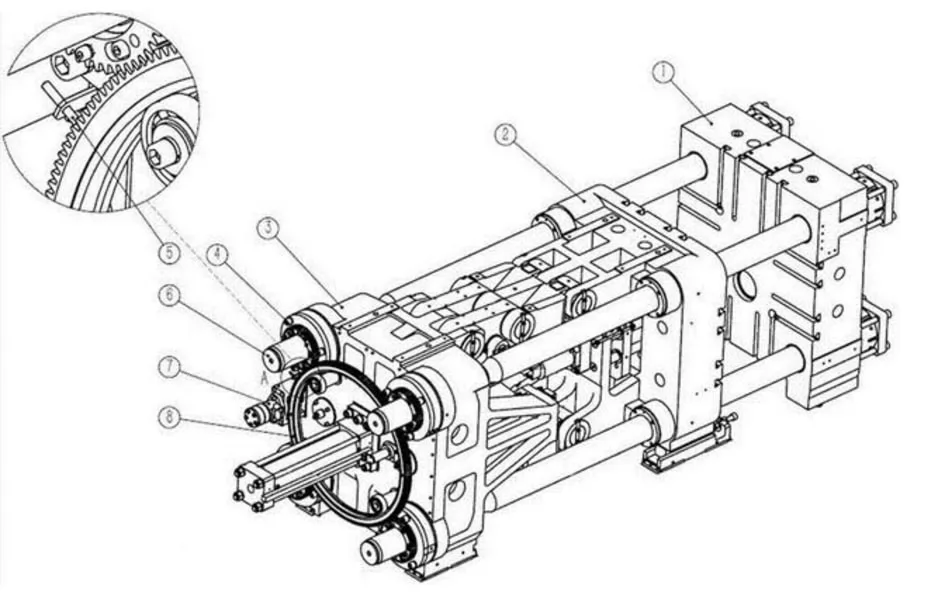
25.How to calculate the clamping force of the injection molding machine?
Calculating the clamping force of an injection molding machine is important for ensuring that the machine is capable of producing high-quality parts and holding the mold shut during the injection process.
The clamping force can be calculated using the following formula:
Clamping force (kN) = (projected area of the part (cm²)) x (maximum injection pressure (bar)) / (2 x safety factor)
The projected area of the part is the total surface area of the part that is in contact with the mold. The maximum injection pressure is the highest pressure at which the plastic is injected into the mold. The safety factor is a value that accounts for any discrepancies in the measurements or unexpected variations in the process. A typical safety factor is 2, but this can vary depending on the specific application.
It's important to note that this formula is an approximation, and the actual clamping force required may vary depending on the specific application, the part's design and the type of plastic being used. Additionally, the clamping force required for a specific application also depends on factors such as part size, weight, and complexity, and the type of material and molding process.
It's also worth noting that the clamping force required for a specific application can vary depending on the size of the machine, the design of the mold and the type of clamping system used. Some machines have a fixed clamping force, while others can be adjusted to suit the specific application.
Ask your injection molding machine manufacturer for the relevant documentation.
26.How much does an injection molding machine cost?
The cost of an injection molding machine can vary widely depending on the type, size, and features of the machine.
A small, benchtop injection molding machine can cost as little as $10,000 to $20,000. These machines are typically used for prototyping or for small-scale production of low-volume parts.
A standard, full-sized injection molding machine can cost anywhere from $50,000 to $500,000 or more. These machines are typically used for high-volume production of medium to large parts and can have a wide range of features including:
- Clamping force
- Shot size
- Injection rate
- Control options
- Automation options
All-electric injection molding machines are generally more expensive than hydraulic machines, but they are more energy-efficient and have a longer lifespan. The cost of an all-electric machine can range from $100,000 to $1,000,000 or more.
It's also worth noting that the cost of an injection molding machine is just one component of the total cost of ownership. Other costs such as the cost of the mold, the cost of raw materials, the cost of labor, and the cost of maintenance and repairs also have to be taken into account.
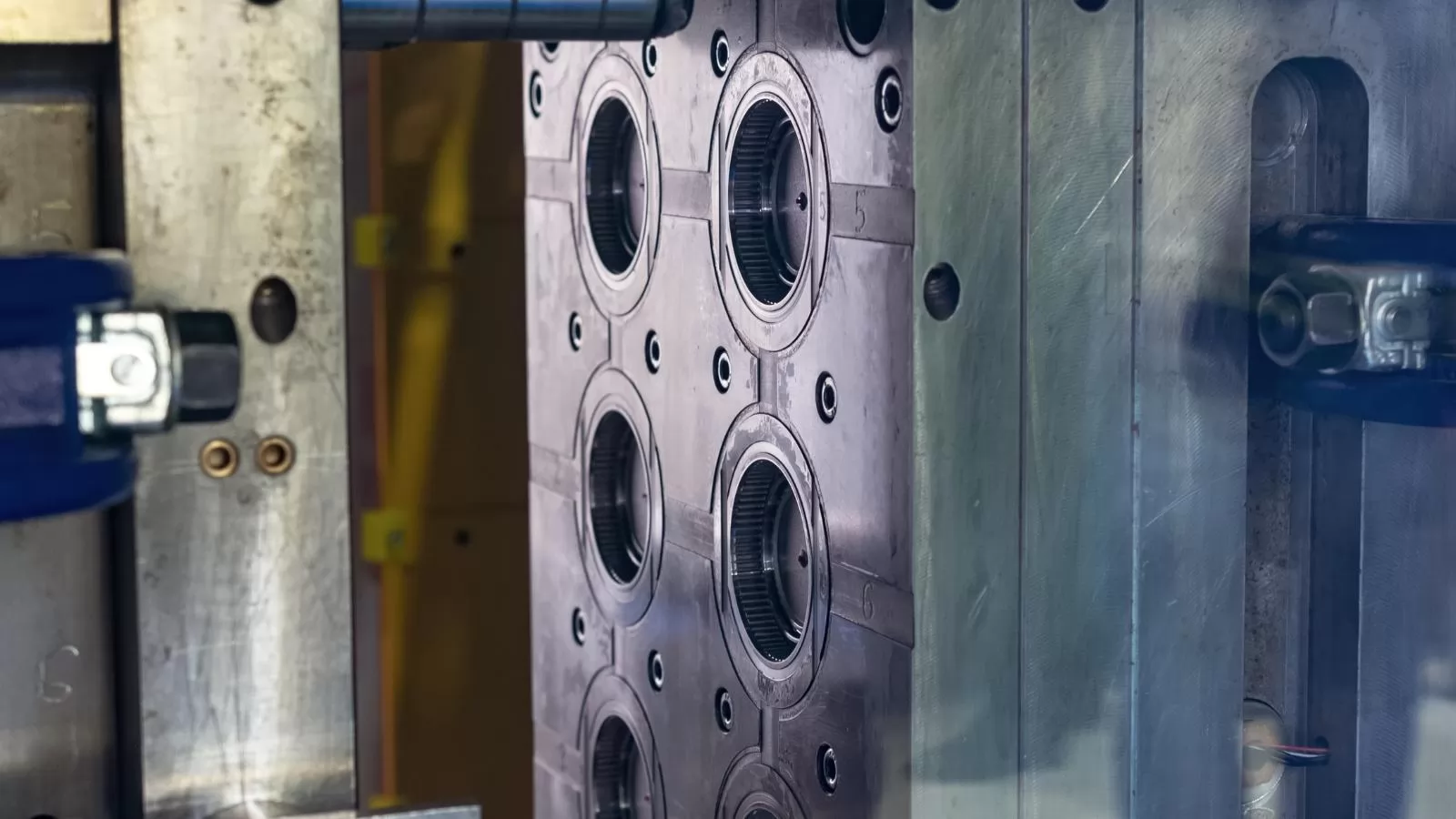
27.How much does injection molding cost?
The cost of injection molding can vary widely depending on several factors, such as the size and complexity of the part, the type of plastic material being used, the quantity of parts being produced, the type of mold being used, and the location and capacity of the injection molding facility.
- The cost of the mold itself can be a significant portion of the total cost, with prices ranging from a few thousand dollars for a simple, single-cavity mold to hundreds of thousands of dollars for a multi-cavity, high-precision mold.
- The cost of the raw materials also varies widely, depending on the type of plastic being used. Some materials, such as ABS or polycarbonate, are relatively inexpensive, while others, such as high-performance engineering plastics, can be quite costly.
- The cost of labor also varies depending on the location and the experience of the workforce.
- The cost of maintenance and repairs also have to be taken into account, as well as the cost of energy to run the machines.
To calculate the cost of injection molding, you can use the following formula:
Cost = (Mold cost + Material cost + Labor cost + Maintenance and repairs + energy cost) / Number of parts produced
It's important to note that this formula is an approximation, and the actual cost of injection molding can vary depending on the specific application and the factors mentioned above. Additionally, the cost can vary depending on the production volume, the complexity of the parts, the material and the location.
28.How to maintain the injection molding machine?
Proper maintenance is crucial for ensuring the efficient and reliable operation of an injection molding machine. Here are some general guidelines for maintaining an injection molding machine:
Regular cleaning
Keep the machine, molds, and surrounding areas clean to prevent dust and debris from accumulating and causing damage or wear.
Lubrication
Lubricate the moving parts of the machine according to the manufacturer's recommendations. This can include the screw, barrel, mold, and other mechanical components.
Inspection
Regularly inspect the machine for any signs of wear or damage, and replace any worn or damaged parts as necessary.
Cooling system
Keep the machine's cooling system clean and free of debris to ensure efficient cooling of the molds and the machine.
Electrical
Regularly check and maintain the electrical components of the machine, such as the wiring and control systems.
Machine calibration
Calibrate the machine according to the manufacturer's recommendations to ensure accurate and consistent production.
Machine operation
Follow the manufacturer's instructions for operating the machine, and ensure that the machine is not overloaded or run for excessive periods of time.
Training
Keep the machine operators and maintenance personnel trained on the proper operation and maintenance of the machine, as well as on safety procedures.
It's important to follow a regular maintenance schedule, and to keep accurate records of all maintenance activities, to ensure that all necessary maintenance is carried out on time.
Click to read Injection Molding Machine Maintenance Guide
29.How to clean the screw of injection molding machine?
Cleaning the screw of an injection molding machine is an important part of regular maintenance. Here are some general guidelines for cleaning the screw of an injection molding machine:
-
Remove the screw: Remove the screw from the barrel of the machine using the appropriate tools and according to the manufacturer's instructions.
-
Clean the screw: Use a brush or a scraper to remove any plastic residue or debris from the screw. For hard-to-remove residues, use a suitable solvent, such as acetone or isopropyl alcohol, and a stiff brush. Be sure to wear gloves and safety goggles when working with solvents.
-
Dry the screw: Thoroughly dry the screw with compressed air or a cloth to remove any remaining solvent or moisture.
-
Lubricate the screw: Apply a small amount of lubricant, such as oil or grease, to the screw to protect it from rust and to aid in the movement of the plastic material.
-
Reassemble the screw: Reassemble the screw in the barrel of the machine according to the manufacturer's instructions.
-
Run a cleaning cycle: Run a cleaning cycle on the machine to flush out any remaining debris or solvents before resuming production.
It's important to follow the manufacturer's recommendations for cleaning and lubricating the screw, and to keep accurate records of all maintenance activities.
30.How often should an injection molding machine be replaced?
The frequency of replacing an injection molding machine will depend on several factors including the usage, maintenance, and the type of the machine.
A well-maintained machine that is used in a low-volume, low-stress application may last for many years. On the other hand, a poorly maintained machine that is used in high-volume, high-stress applications may need to be replaced after just a few years.
For machines that are used in high-volume production, it's common to replace them every 7 to 10 years. The reason for this is that over time, the machine will experience wear and tear, and the technology is constantly improving, making new machines more efficient, faster, and more accurate.
All-electric injection molding machines are generally considered to have a longer lifespan than hydraulic machines, due to their lack of mechanical components that are subject to wear and tear.
It's also worth noting that the cost of repairs and maintenance should also be taken into account when considering whether to replace a machine. If the cost of repairs and maintenance becomes too high, it may be more cost-effective to replace the machine instead.
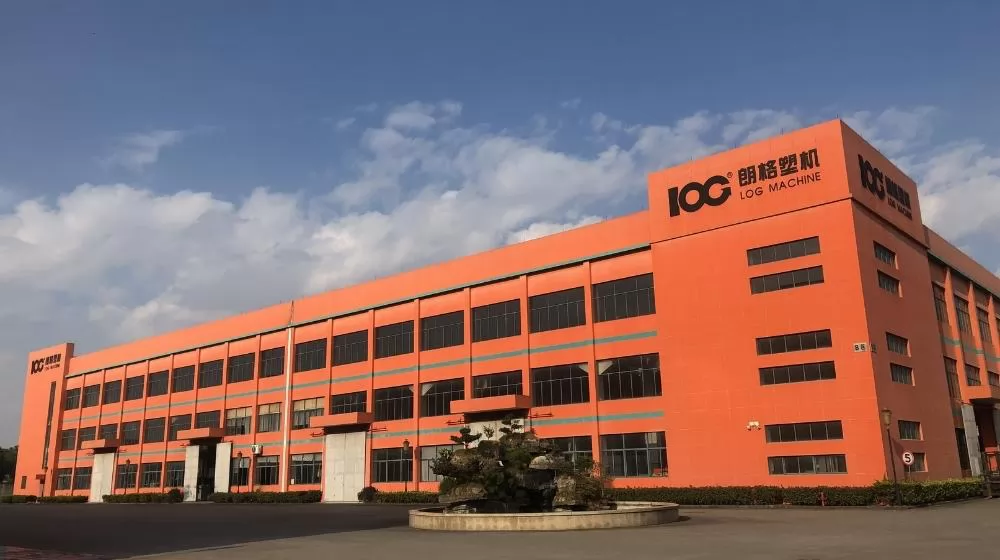
31.How to choose an injection molding machine?
Choosing an injection molding machine can be a complex process as it depends on several factors including the type of part to be produced, the material to be used, the production volume, and the budget. Here are some general guidelines to help you choose the right injection molding machine for your application:
Part and material
Consider the size, shape, and complexity of the part, as well as the type of plastic material that will be used. This will help determine the clamping force, shot size, and other machine specifications that are required.
Production volume
Consider the number of parts that will be produced on a daily, weekly, or monthly basis. This will help determine the cycle time, machine size, and other production-related specifications.
Budget
Consider the budget for the machine and the overall cost of ownership, which includes the cost of the machine, the cost of the mold, the cost of raw materials, and the cost of labor, maintenance and energy.
Type of machine
Consider the type of machine that best suits your application, such as a hydraulic, all-electric, or servo motor machine.
Additional features
Consider the additional features that you may need, such as automation, robotics, or in-mold labeling.
Brand and supplier
Consider the reputation and experience of the brand and supplier, as well as their ability to provide support and service.
Maintenance and repair
Consider the cost and ease of maintenance and repair of the machine.
Energy efficiency
Consider the energy efficiency of the machine, as this can significantly impact the cost of operation over time.
Click to read the full buying guide
32.Where can I find China plastic injection molding machines?
China is a major manufacturer of plastic injection molding machines and there are many suppliers and manufacturers of these machines available in the country. Some ways to find China plastic injection molding machines include:
Online marketplaces
Websites like Alibaba, Made-in-China, and Global Sources are popular platforms for finding China-based suppliers of plastic injection molding machines.
Industry trade shows
Trade shows such as Chinaplas, China International Industry Fair and CHINAPLAST are a great way to see a wide range of plastic injection molding machines from various manufacturers and suppliers in one place.
Manufacturer's websites
Many Chinese manufacturers of plastic injection molding machines have their own websites where you can find information about their products and contact them directly for more information.
Industry associations
Joining industry associations, such as China Plastics Machinery Industry Association, can provide you with access to a network of suppliers and manufacturers of plastic injection molding machines in China.
Consultants and agents
Consultants and agents specialize in connecting international buyers with Chinese manufacturers and can help you find a suitable plastic injection molding machine supplier in China.
It's important to research potential suppliers and manufacturers thoroughly and to visit the factory if possible to ensure that the supplier is reputable and that the machines meet your requirements and expectations.
_1673768203_WNo_284d260.webp)
33.How can I expand my injection molding business?
Expanding an injection molding business can be achieved through several strategies, here are some general guidelines:
Increase production capacity
Consider investing in new or upgraded injection molding machines, molds, and automation equipment to increase production capacity.
Diversify product offerings
Consider diversifying the product offerings to attract new customers and enter new markets. This can include producing different types of parts, using different types of plastics, or offering additional services such as assembly, packaging, or logistics.
Improve efficiency and quality
Invest in training and technology to improve the efficiency and quality of the production process. This can include implementing lean manufacturing principles, investing in quality control equipment, and investing in software to improve data analysis and management.
Marketing and Sales
Focus on expanding your customer base through marketing and sales efforts. This can include developing a strong online presence, attending trade shows, or creating a referral program to attract new customers.
Networking and Partnership
Building relationships with other businesses, suppliers, and customers can help expand your business by creating new opportunities for collaboration and partnerships.
Innovation
Constantly seeking new and innovative ways to improve the business will help to stay ahead of the competition and offer new products and services to attract new customers.
Scalability
Make sure that the business has the capacity to scale up quickly if the demand increases. This includes having the necessary resources, staff, and equipment to handle an increase in volume.
34.What is the most important thing in plastic injection molding?
There are several important factors to consider in plastic injection molding, but the most important thing is to ensure that the finished product meets the required specifications in terms of quality, performance and cost-effectiveness.
Quality
Quality control is crucial in plastic injection molding, as it ensures that the parts produced meet the required specifications and tolerances. This includes monitoring the process, inspecting the parts, and implementing quality control measures such as Statistical Process Control (SPC) to detect and correct any issues.
Design
The design of the mold and the part is also important. A well-designed mold can improve the efficiency and quality of the injection molding process, while a poorly designed mold can lead to defects and increased production costs.
Material selection
Choosing the right type of plastic material is also crucial in plastic injection molding. Different materials have different properties, and it's important to select a material that is suitable for the application and meets the required specifications.
Machine maintenance
Proper maintenance of the injection molding machine is also crucial to ensure that it runs smoothly and efficiently. Regular cleaning, lubrication, and inspection of the machine can help prevent downtime and prolong the life of the machine.
Process control
Controlling the various parameters of the injection molding process is also important to ensure that the finished parts meet the required specifications. This includes controlling the temperature, pressure, and speed of the injection molding process.
Cost-effectiveness
The cost-effectiveness of the plastic injection molding process is also important, as it can help to reduce production costs and increase profitability. This includes minimizing waste, using energy-efficient equipment, and automating the process.
35.Which top injection molding machine manufacturers are there in China?
We have prepared a list for you. Here are 30 outstanding injection molding machine manufacturers and brands in China. You can browse them roughly, or read this article in detail: Top30 Injection Molding Machine Brands in China.
List of China Top30 Injection Molding Machine Brands
| Company | Logo | Established | Location | Details |
|---|---|---|---|---|
| Haitian Plastic Machinery Group Co., Ltd. |
 |
1966 | No. 1688 Haitian Road, Xiaogang, Beilun District, Ningbo City, Zhejiang Province. | Learn More |
| Shanghai Fanuc Robot Co., Ltd. |
 |
1997 | Shanghai | Learn More |
| Log-Machine (Ningbo Chuangji Machinery Co., Ltd.) |
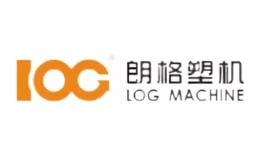 |
2007 | Yuyao District, Ningbo City, Zhejiang Province. | Learn More |
| Guangdong Yizumi Precision Machinery Co., Ltd. |
 |
2002 | Guangdong Province | Learn More |
| Chen Hsong Machinery (Shenzhen) Co., Ltd. |
 |
1958 | Hong Kong | Learn More |
| Husky Injection Molding Systems (Shanghai) Co., Ltd. |
 |
2002 | Shanghai | Learn More |
| Demag Plastic Machinery (Ningbo) Co., Ltd. |
 |
1998 | Ningbo City, Zhejiang Province. | Learn More |
| Ningbo Kebida (Hystan) Plastic Machinery Manufacturing Co., Ltd. |
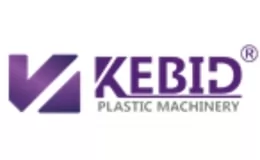 |
2010 | Ningbo City, Zhejiang Province. | Learn More |
| LK Technology Group Co., Ltd. |
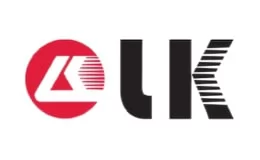 |
1994 | Guangdong Province. | Learn More |
| Borch Intelligent Equipment Co., Ltd. |
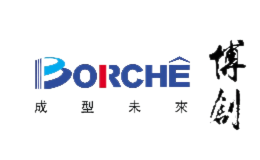 |
2002 | Guangzhou City, Guangdong Province. | Learn More |
| Shanghai NISSEI Plastic Machinery Co., Ltd. |
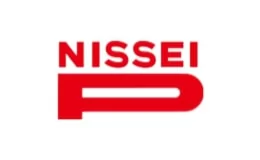 |
2003 | Shanghai | Learn More |
| Engel Machinery (Shanghai) Co., Ltd. |
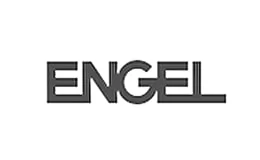 |
1945 | Shanghai | Learn More |
| Zhafir Plastics Machinery |
 |
2005 | Ningbo City, Zhejiang Province. | Learn More |
| JSW Plastic Machinery (Shenzhen) Co., Ltd. |
 |
1907 | Shenzhen City, Guangdong Province. | Learn More |
| Donghua Machinery Co., Ltd. |
 |
1986 | Guangdong Province. | Learn More |
| Dongguan FCS Plastic Machinery Manufacturing Co., Ltd. |
 |
1994 | Dongguan City, Guangdong Province/Taiwan Province, China. | Learn More |
| Tederic machinery co., ltd. |
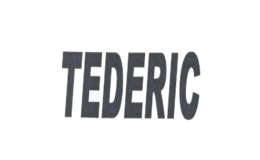 |
2006 | Hangzhou City, Zhejiang Province. | Learn More |
| Ningbo Hwamda Machinery Manufacturing Co., Ltd. |
 |
2002 | Ningbo City, Zhejiang Province. | Learn More |
| Guangdong Jiaming Machinery Co., Ltd. |
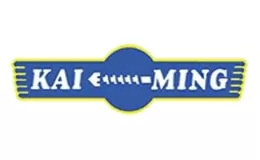 |
1998 | Guangdong Province. | Learn More |
| Toshiba Machinery (Shanghai) Co., Ltd. |
 |
2002 | Shanghai | Learn More |
| Ningbo Shuangma Machinery Industry Co., Ltd. |
 |
2003 | Ningbo City, Zhejiang Province. | Learn More |
| Arburg Machinery (Shanghai) Co., Ltd. |
 |
2003 | Shanghai | Learn More |
| Chuan li fa machinery co., ltd. |
 |
1966 | No. 1688 Haitian Road, Xiaogang, Beilun District, Ningbo City, Zhejiang Province. | Learn More |
| Ningbo Haixiong Plastic Machinery Co., Ltd. |
 |
1966 | Taiwan Province, China | Learn More |
| Foshan Shunde Zhende Plastic Machinery Co., Ltd. |
 |
1985 | Foshan City, Guangdong Province. | Learn More |
| Ningbo Haida Plastic Machinery Co., Ltd. |
 |
1992 | Ningbo City, Zhejiang Province. | Learn More |
| Milacron Trading (Shanghai) Co., Ltd. |
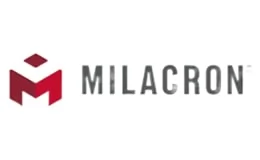 |
1998 | Shanghai | Learn More |
| Ningbo Tongyong Plastic Machinery Manufacturing Co., Ltd. |
 |
1985 | Ningbo City, Zhejiang Province. | Learn More |
| WITTMANN BATTENFELD MACHINERY (SHANGHAI) CO., LTD. |
 |
2001 | Shanghai | Learn More |
| Ningbo Shuangsheng Plastic Machinery Co., Ltd. |
 |
1966 | Yinzhou District, Ningbo City, Zhejiang Province. | Learn More |
36.Who are the top injection molding machine manufacturers in the world?
We have prepared a list for you, here are the top 10 injection molding machine manufacturers and brands in the world, you can browse in general, or read this article in detail: World's top10 injection molding machine manufacturers.
Top 10 Injection Molding Machine Manufacturer in World
| Brand | Logo | Established | Country | Revenue | |
|---|---|---|---|---|---|
| 1. ENGEL |
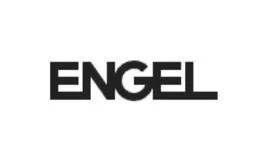 |
1945 | Austria | $1.5 Billion | |
| 2. Haitian International |
 |
1966 | China | $2.5 Billion | |
| 3. Milacron |
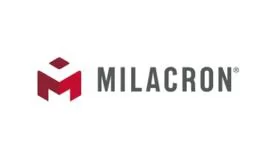 |
1874 | USA | $1.258 Billion | |
| 4. ARBURG |
 |
1923 | Germany | $578 Million | |
| 5. Husky |
 |
1953 | Canada | $990 Million | |
| 6. Sumitomo Demag |
 |
1970 | Germany | $287 Million | |
| 7. Shibaura |
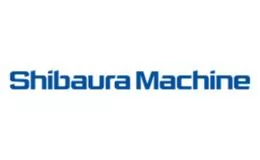 |
1875 | Japan | $1.06 Billion | |
| 8. JSW |
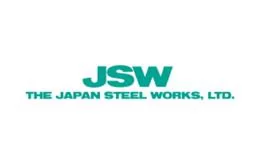 |
1907 | Japan | $1.8 Billion | |
| 9. NISSEI |
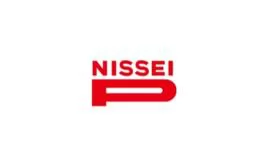 |
1947 | Japan | $339.22 Million | |
| 10. FANUC |
 |
1972 | Japan | $4.42 Billion | |
| Log Machine (Ningbo Chuangji) |
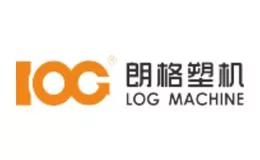 |
2007 | China | $46.2 Million |
37.Do you need an injection machine?
Purchasing an injection molding machine is a big investment, and it is very important to choose the right one. Through the above steps, you can get the injection molding machine specifications you need and the injection molding machine manufacturers that suit you. Every manufacturer offers a different solution. Please ask the injection molding machine supplier for all details carefully to ensure you get the product you want. Please choose the most suitable manufacturer after horizontal comparison. Hope this guide helps you.
Finally, we recommend Log-Machine, a top injection molding machine manufacturer in China. We provide high quality injection molding machines and low prices. Log Machine will be your ideal partner.
Contact us for more information.




